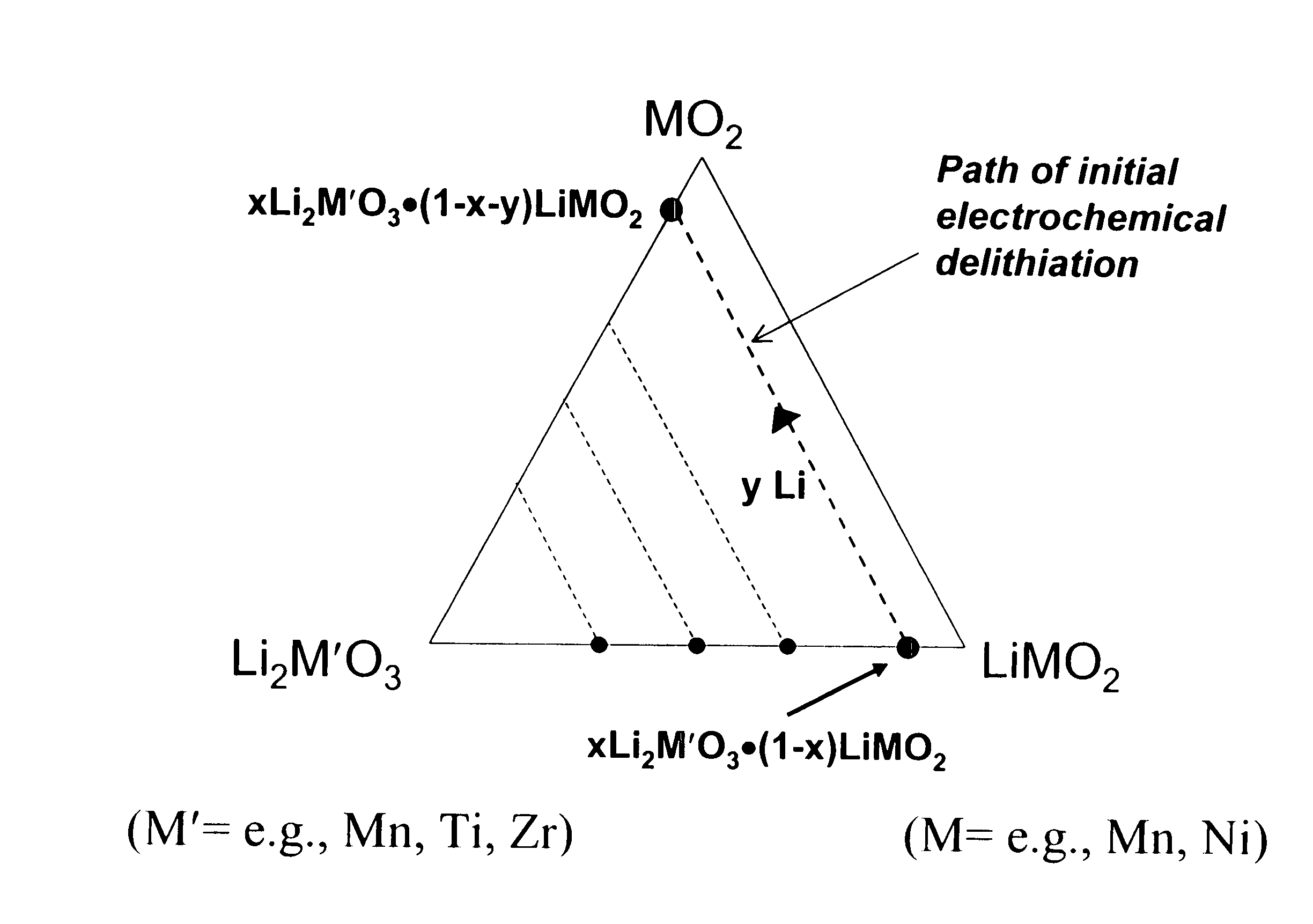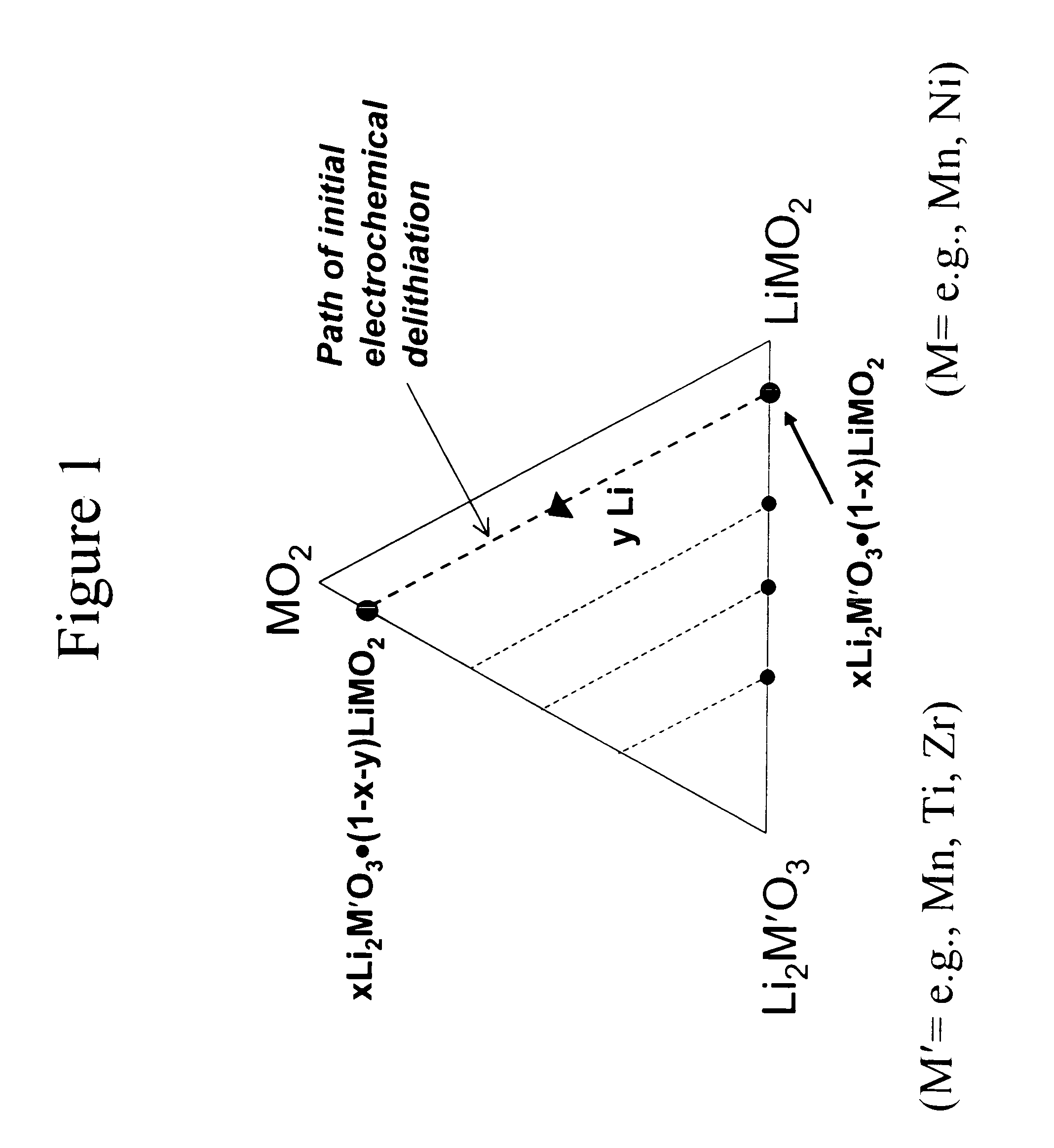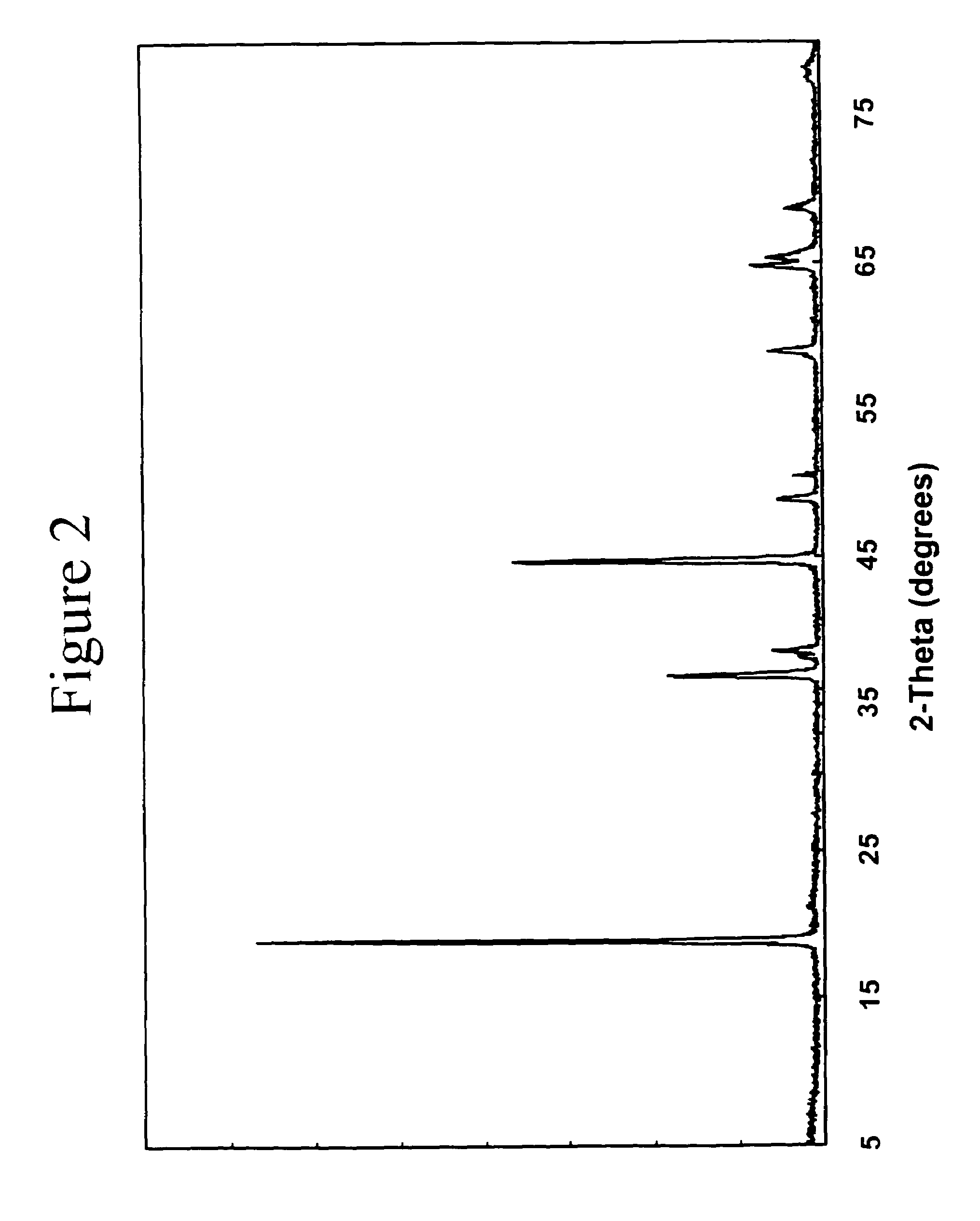Lithium metal oxide electrodes for lithium cells and batteries
a technology of lithium cells and positive electrodes, applied in the direction of manganates/permanentates, nickel compounds, cell components, etc., can solve the problems of affecting the stability of lithium cells, so as to improve the stability of the electrodes and the stability of the structure. , the effect of improving the stability
- Summary
- Abstract
- Description
- Claims
- Application Information
AI Technical Summary
Benefits of technology
Problems solved by technology
Method used
Image
Examples
example 1
[0036]The electrode material 0.2Li2MnO3.0.8LiNi0.8Co0.2O2 that can be written, alternatively, as Li(Ni0.58Mn0.18Co0.15Li0.09)O2 was prepared by the reaction of Ni(NO3)2, Co(NO3)2, MnO2, and LiOH in the required stoichiometric amounts at 800° C. in air or oxygen for about 16 hours. The powder X-ray diffraction pattern of this compound indicates an essentially single-phase product with a layered-type structure (FIG. 2).
example 2
[0037]The electrode material 0.2Li2Mn1-xTixO3.0.8LiNi0.8Co0.2O2, where x=0.5, which can be written, alternatively, as Li(Ni0.58Mn0.09Ti0.09Co0.15Li0.09)O2 was prepared by the reaction of Ni(NO3)2, Co(NO3)2, MnO2, TiO2 (anatase) and LiOH in the required stoichiometric amounts at 800° C. in air or oxygen for about 16 hours. The powder X-ray diffraction pattern of this compound indicates an essentially single-phase product with a layered-type structure (FIG. 3).
example 3
[0038]The electrode material 0.15Li2TiO3.0.85LiMnO2 that can be written, alternatively, as Li(Ti0.14Mn0.79Li0.07)O2 was prepared by the hydrothermal reaction of Mn2O3, TiO2 (anatase) and LiOH in the required stoichiometric amounts at 220° C. and 15 atmospheres pressure for about 10 hours. The powder X-ray diffraction pattern of this compound indicates an essentially single-phase product with a layered-type structure (FIG. 4).
PUM
 Login to View More
Login to View More Abstract
Description
Claims
Application Information
 Login to View More
Login to View More - R&D
- Intellectual Property
- Life Sciences
- Materials
- Tech Scout
- Unparalleled Data Quality
- Higher Quality Content
- 60% Fewer Hallucinations
Browse by: Latest US Patents, China's latest patents, Technical Efficacy Thesaurus, Application Domain, Technology Topic, Popular Technical Reports.
© 2025 PatSnap. All rights reserved.Legal|Privacy policy|Modern Slavery Act Transparency Statement|Sitemap|About US| Contact US: help@patsnap.com



